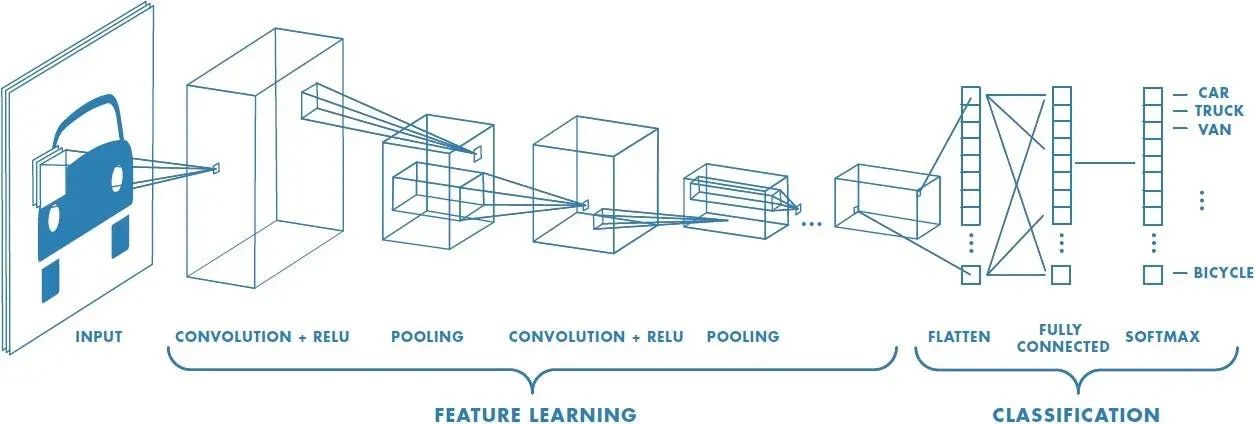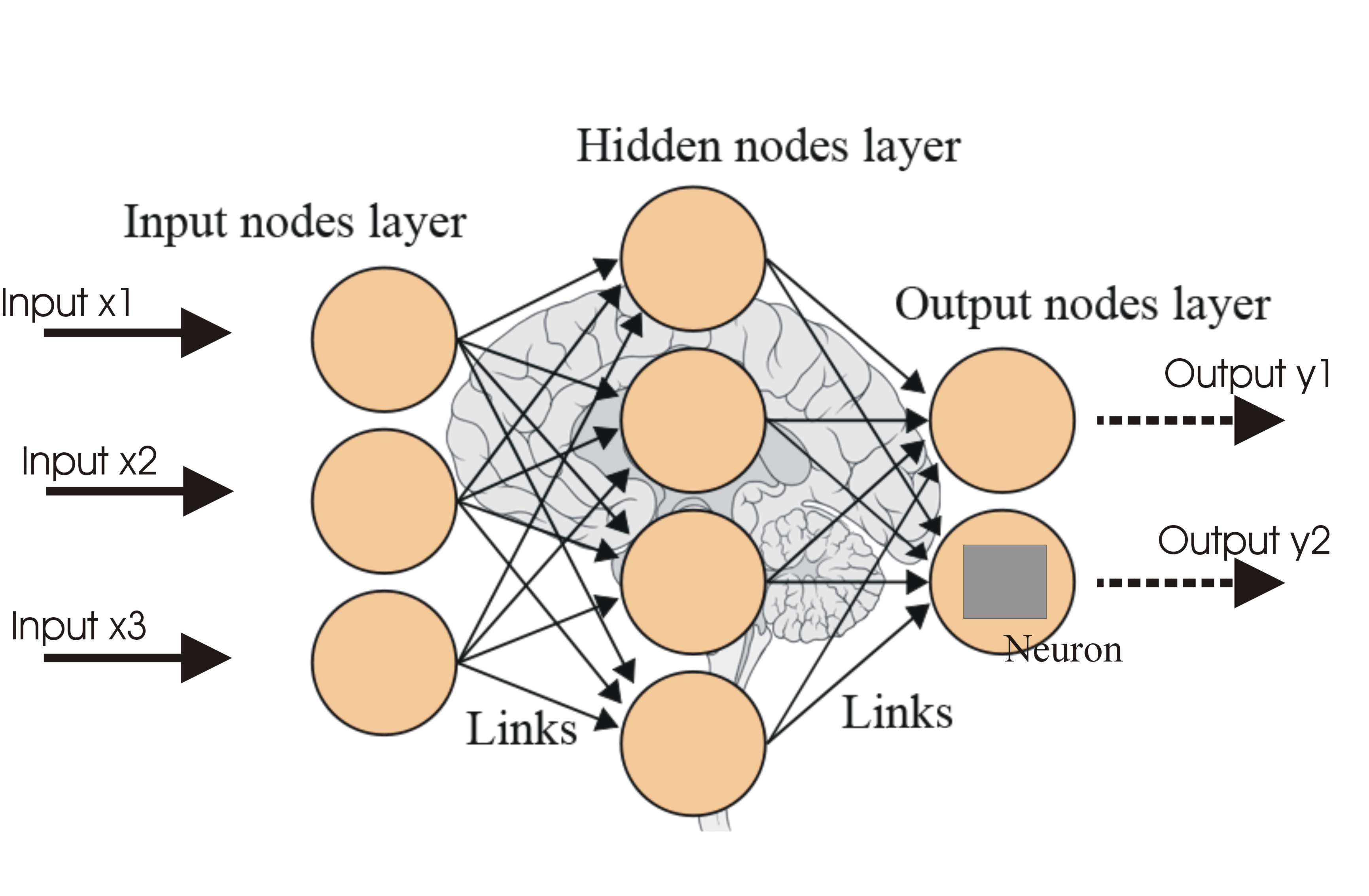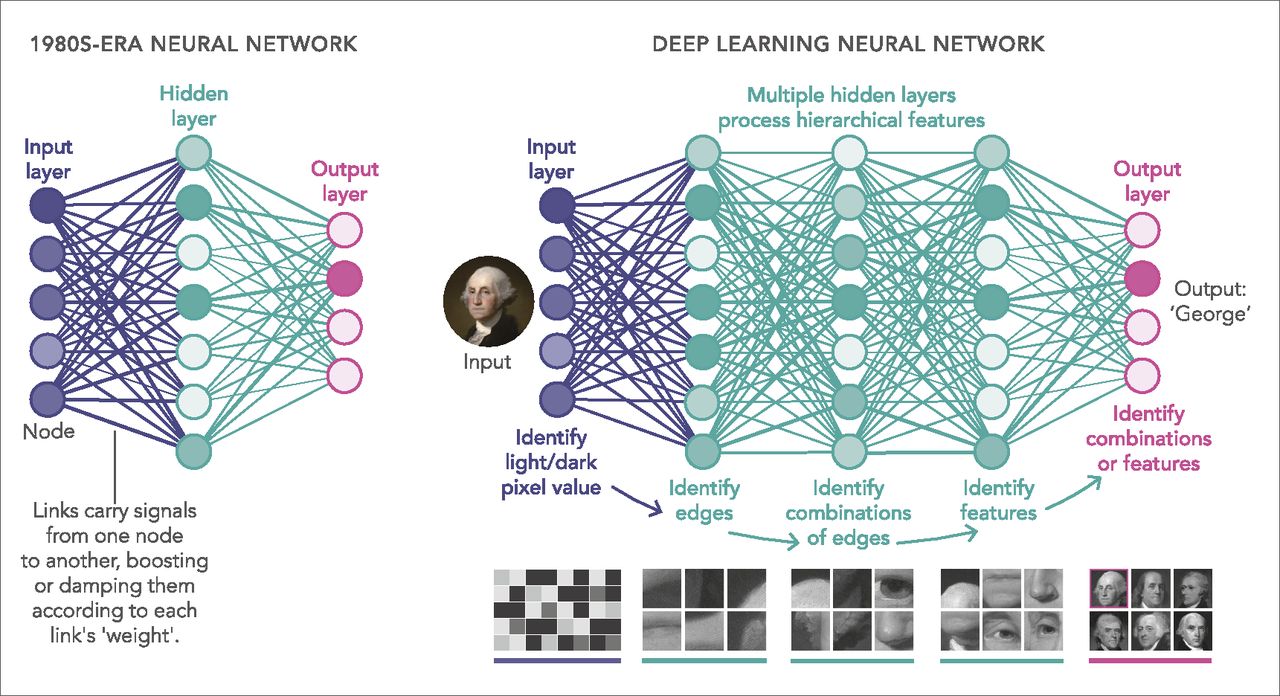Introduction
Welcome to the world of machine learning where algorithms and data converge to uncover patterns and make sense of complex information. One crucial aspect of machine learning is signal processing, a field that plays a vital role in analyzing and extracting meaningful insights from data. Signal processing involves the manipulation, transformation, and interpretation of signals, which can be anything from audio and visual data to sensor readings and more.
In the realm of machine learning, signal processing acts as an intermediary step between raw data and the final output. It helps to preprocess and prepare the data, making it more suitable for analysis and modeling. By applying various techniques and algorithms, signal processing enables machine learning models to extract relevant features, reduce noise, and improve the accuracy and efficiency of the learning process.
The importance of signal processing in machine learning cannot be overstated. It serves as a foundation for the development of robust and accurate models by enhancing the quality and relevance of the input data. Without proper signal processing techniques, machine learning models may encounter challenges when dealing with noisy or incomplete data, leading to subpar results.
Signal processing works hand in hand with machine learning algorithms to uncover hidden patterns, relationships, and trends in the data. It allows machines to understand and interpret the data in a meaningful way, enabling them to make informed decisions or predictions.
In the following sections, we will explore the intricacies of signal processing in machine learning, including the common techniques used, applications across various domains, and the challenges that researchers and practitioners face in this field. So, fasten your seatbelt as we embark on this exciting journey into the world of signal processing in machine learning!
What Is Signal Processing
Signal processing is a multidisciplinary field that involves the analysis, modification, and interpretation of signals to extract relevant information. Signals are essentially sets of data that represent various forms of information, such as audio, video, images, or sensor readings. These signals can be analog or digital, continuous or discrete, and can originate from a wide range of sources.
The primary goal of signal processing is to manipulate and transform signals to enhance their quality, extract useful features, and facilitate data analysis. It involves a combination of mathematical techniques, algorithms, and tools to analyze and interpret signals in a meaningful way.
Signal processing can be broadly categorized into two domains: analog signal processing and digital signal processing. Analog signal processing deals with continuous signals, while digital signal processing operates on discrete signals represented as sequences of numbers.
In the context of machine learning, signal processing plays a crucial role in preprocessing and preparing the data before feeding it into the learning algorithms. It involves various techniques to remove noise, filter out irrelevant information, and extract meaningful features from the signals. This preprocessing step is fundamental for ensuring the accuracy and reliability of the machine learning models.
Signal processing techniques can vary depending on the specific application and the nature of the signals being analyzed. Some common techniques include filtering, noise reduction, feature extraction, time-frequency analysis, and pattern recognition.
Filtering, for example, is often used to remove unwanted noise or interference from signals. This can be achieved through various filtering methods, such as low-pass filters, high-pass filters, or band-pass filters, depending on the desired frequency range. Noise reduction techniques can include adaptive filtering, spectral subtraction, or wavelet denoising, among others.
Feature extraction is another important aspect of signal processing. It involves identifying and capturing relevant information from the signals to represent them in a more concise and meaningful way. This can include techniques such as Fourier analysis, wavelet transforms, or principal component analysis (PCA).
Overall, signal processing serves as a critical component in machine learning, enabling the preprocessing and enhancement of data for more accurate and effective analysis. By applying various techniques, researchers and practitioners can uncover valuable insights from signals to drive advancements in a wide range of fields, including healthcare, finance, telecommunications, and more.
The Importance of Signal Processing in Machine Learning
Signal processing plays a pivotal role in machine learning by improving the quality and relevance of the input data, enabling more accurate and reliable model training and predictions. Here are some key reasons why signal processing is essential in the field of machine learning:
1. Noise reduction and data cleaning: Raw data collected for machine learning purposes often contains inherent noise or irrelevant information. Signal processing techniques help filter out noise, eliminate outliers, and clean the data, ensuring that the machine learning models are trained on reliable and meaningful data. By reducing noise and removing discrepancies, signal processing improves the quality of input data, leading to more accurate predictions and insights.
2. Feature extraction: One of the primary tasks in machine learning is identifying relevant features that have significant predictive power. Signal processing provides techniques for feature extraction, enabling the algorithms to focus on the most informative aspects of the data. By extracting essential features, signal processing helps reduce dimensionality, enhance performance, and accelerate model training.
3. Data normalization and preprocessing: Signal processing techniques allow for the normalization and preprocessing of data to ensure consistency and comparability across different signal types. This step is crucial to eliminate biases and ensure fair data representation within the machine learning model. Normalization techniques, such as scaling or standardization, help align the input data, leading to more reliable and unbiased predictions.
4. Signal enhancement: In many cases, raw signals may be weak, distorted, or of poor quality, making it challenging to extract meaningful information. Signal processing techniques help enhance the signals by reducing noise, sharpening edges, improving contrast, or amplifying specific features. This enhancement step improves the signal-to-noise ratio, enabling machine learning models to detect patterns and make accurate predictions.
5. Real-time processing: Many applications of machine learning require real-time data analysis and decision-making. Signal processing enables efficient and effective real-time processing by reducing computational complexity and providing rapid and responsive analysis of incoming signals. This is crucial in time-sensitive domains like finance, healthcare, and robotics.
6. Signal interpretation and understanding: Signals in machine learning can come in various forms, such as audio, visual, or sensor data. Signal processing techniques facilitate the interpretation and understanding of these signals, enabling machines to extract relevant information and make sense of complex data. This interpretation allows for better classification, object recognition, speech understanding, and more.
In summary, signal processing is of utmost importance in machine learning as it lays the foundation for accurate data analysis and modeling. By reducing noise, extracting essential features, preprocessing data, and enhancing signals, signal processing techniques enhance the quality and relevancy of the input data, improving the overall performance and efficiency of machine learning models.
How Signal Processing Works in Machine Learning
Signal processing plays a crucial role in machine learning by preprocessing and transforming raw data into a format that is suitable for analysis and modeling. Here’s a breakdown of how signal processing works in the context of machine learning:
1. Data acquisition: The first step in signal processing is the acquisition of raw data. This can involve collecting signals from sensors, capturing audio or visual data, or gathering any other form of input relevant to the problem at hand.
2. Preprocessing: Once the raw data is acquired, preprocessing techniques are applied to clean and normalize the data. This includes removing noise, outliers, and irrelevant information, as well as normalizing and standardizing the data to ensure consistency and comparability.
3. Feature extraction: Signal processing techniques are used to extract relevant features from the preprocessed data. Feature extraction involves identifying specific patterns, characteristics, or numerical representations that capture important information for the machine learning task. This step reduces the dimensionality of the data, making it more manageable for analysis and modeling.
4. Dimensionality reduction: In some cases, the extracted features might still result in high-dimensional data. Dimensionality reduction techniques, such as principal component analysis (PCA) or t-SNE, are applied to reduce the number of variables while retaining as much information as possible. This step helps improve computational efficiency and reduces the risk of overfitting.
5. Model training and evaluation: After signal processing has transformed the data into a more meaningful representation, it is ready for model training and evaluation. Machine learning algorithms are applied to the preprocessed data to learn patterns, build predictive models, and make predictions or classifications.
6. Post-processing: Once the model has made predictions or classifications, post-processing techniques can be applied to refine the results. This can involve thresholding, filtering, or further analysis to enhance the accuracy or interpretability of the output.
7. Iterative refinement: Signal processing and machine learning often work in an iterative loop. As new data becomes available, it goes through the signal processing pipeline to update the model or improve its performance. This iterative refinement ensures that the model stays up to date and can adapt to changing data patterns over time.
8. Deployment and prediction: Once the model is trained and evaluated, it can be deployed to make predictions or classifications on new, unseen data. The signal processing techniques applied during training are also applied to the new data before it is fed into the model for prediction.
Overall, signal processing acts as a crucial intermediary step between raw data and machine learning algorithms. Its main purpose is to preprocess and transform the data, making it more suitable for analysis, reducing noise and irrelevant information, and extracting meaningful features. By enhancing the input data, signal processing helps improve the performance and accuracy of machine learning models, enabling them to make valuable predictions or classifications.
Common Techniques in Signal Processing for Machine Learning
Signal processing employs a variety of techniques to analyze, manipulate, and extract valuable information from signals in the context of machine learning. These techniques play a crucial role in enhancing the quality of the input data and improving the accuracy of machine learning models. Here are some common techniques used in signal processing for machine learning:
1. Filtering: Filtering techniques are used to remove unwanted noise or interference from signals. This can include low-pass filters, high-pass filters, band-pass filters, or adaptive filters. Filtering helps enhance the signal-to-noise ratio, making it easier for machine learning algorithms to detect patterns and make accurate predictions.
2. Feature extraction: Feature extraction techniques aim to identify and capture relevant information from signals, representing them in a more concise and meaningful way. This can include techniques such as Fourier analysis, wavelet transforms, or principal component analysis (PCA). Feature extraction reduces the dimensionality of the data, making it more manageable for machine learning models.
3. Time-frequency analysis: Time-frequency analysis techniques, such as short-time Fourier transform (STFT) or wavelet transform, allow for the analysis of signals in both the time and frequency domains. This helps to capture time-varying characteristics of signals and extract dynamic features, which can be useful in applications such as speech recognition, audio processing, or biomedical signal analysis.
4. Sampling and interpolation: Sampling refers to the process of converting continuous signals into discrete signals. In signal processing for machine learning, proper sampling techniques ensure the accurate representation of the signals while avoiding aliasing effects. On the other hand, interpolation techniques are used to reconstruct the original continuous signals from discrete samples, enabling more accurate analysis and modeling.
5. Noise reduction: Noise reduction techniques aim to minimize the impact of noise on the signals. This can include methods such as adaptive filtering, spectral subtraction, or wavelet denoising. By reducing noise, the quality of the signals is improved, leading to more reliable and accurate predictions in machine learning models.
6. Time-series analysis: Time-series analysis techniques are used to analyze signals that vary with time. This can include trend analysis, seasonality detection, or forecasting methods such as autoregressive integrated moving average (ARIMA) or recurrent neural networks (RNNs). Time-series analysis helps uncover patterns and trends in the data, which can be valuable in predicting future behavior or making informed decisions.
7. Signal segmentation: Signal segmentation techniques divide long signals into shorter segments based on specific characteristics or events. This can help in isolating specific patterns or segments of interest. Segmentation is particularly useful when dealing with large or complex signals, allowing for focused analysis and targeted modeling.
8. Signal compression: Signal compression techniques aim to reduce the amount of data required to represent signals without significant loss of information. This can include methods such as discrete cosine transform (DCT), wavelet compression, or Huffman coding. Signal compression is crucial in applications where storage or transmission capacity is limited, ensuring efficient data representation and transmission.
These are just a few examples of the common techniques employed in signal processing for machine learning. The choice of techniques depends on the specific characteristics of the signals and the objectives of the machine learning task. By applying these and other signal processing techniques, researchers and practitioners can effectively preprocess data and extract meaningful features, paving the way for improved accuracy and performance in machine learning models.
Applications of Signal Processing in Machine Learning
The integration of signal processing techniques within machine learning has paved the way for various applications across numerous domains. By effectively analyzing and processing signals, machine learning models can extract valuable insights and make informed decisions. Here are some notable applications of signal processing in machine learning:
1. Speech and audio processing: Signal processing plays a critical role in speech and audio applications, such as speech recognition, speaker identification, and audio classification. Techniques like Fourier analysis, cepstral analysis, and hidden Markov models (HMMs) enable machines to understand and interpret spoken language, enabling applications like virtual assistants, voice-controlled systems, and transcription services.
2. Image and video processing: Signal processing techniques are extensively used in image and video applications, including object recognition, image compression, and video surveillance. Techniques like image filtering, edge detection, feature extraction, and convolutional neural networks (CNNs) enable machines to analyze and interpret visual data, facilitating applications like image recognition, autonomous vehicles, and video analysis for security purposes.
3. Biomedical signal processing: Signal processing plays a crucial role in the analysis of various biomedical signals, such as electrocardiograms (ECGs), electroencephalograms (EEGs), and medical imaging. Techniques like filtering, wavelet analysis, and time-frequency analysis enable the detection and diagnosis of abnormalities, aiding in tasks such as disease detection, monitoring patient health, and advancing medical research.
4. Sensor data analysis: Signal processing helps in extracting meaningful information from sensor data collected in various domains, such as environmental monitoring, Internet of Things (IoT) devices, and smart devices. By applying signal processing techniques, machines can interpret sensor data, identify patterns, and make predictions for applications like weather forecasting, predictive maintenance, and smart home automation.
5. Financial market analysis: Signal processing techniques are used to analyze financial market data, including stock prices, market sentiment, and economic indicators. By processing and analyzing these signals, machines can identify trends, patterns, and anomalies, aiding in tasks such as stock market prediction, algorithmic trading, and risk assessment.
6. Communication systems: Signal processing is crucial in communication systems, enabling data transmission, encoding, decoding, and error correction. Techniques like modulation, demodulation, channel equalization, and error detection and correction facilitate reliable communication in various applications, including wireless networks, satellite communications, and digital television.
7. Natural language processing: Signal processing techniques are utilized in natural language processing applications, such as text analysis, sentiment analysis, and machine translation. By applying techniques like text preprocessing, feature extraction, and language modeling, machines can understand and generate human language, revolutionizing applications like chatbots, language assistants, and automated translation services.
8. Environmental monitoring: Signal processing techniques are employed in environmental monitoring applications, enabling the analysis and interpretation of data collected from sensors and remote sensing devices. By processing signals related to temperature, humidity, pollution levels, and weather conditions, machines can monitor and predict environmental changes, facilitating tasks like climate modeling, pollution control, and disaster management.
These applications highlight the versatility and impact of signal processing in machine learning. By effectively analyzing and processing signals in various domains, machine learning models can extract valuable insights, make accurate predictions, and drive advancements in technology, research, and decision-making.
Challenges in Signal Processing for Machine Learning
While signal processing plays a crucial role in machine learning, it also presents various challenges that researchers and practitioners need to address. Overcoming these challenges is vital to ensure the accuracy, reliability, and efficiency of signal processing techniques. Here are some of the main challenges in signal processing for machine learning:
1. Noisy signals: Signal processing often deals with signals that are corrupted by noise, affecting the quality and accuracy of the data. Devising robust filtering techniques and noise reduction algorithms is critical to mitigate the impact of noise and improve the reliability of the processed signals.
2. Signal variability: Signals can exhibit considerable variability due to diverse factors such as environmental conditions, hardware limitations, or individual differences. Developing signal processing techniques that are resilient to these variations is essential to ensure the generalizability and adaptability of machine learning models across different scenarios.
3. Real-time processing constraints: Certain applications of signal processing in machine learning, such as real-time monitoring or control systems, require low-latency processing. Implementing efficient algorithms and optimizing computational resources are necessary to meet real-time processing demands without sacrificing accuracy.
4. Data scarcity: In some domains, acquiring labeled or annotated data for training machine learning models can be a challenge. Limited availability of data can hinder the development and evaluation of signal processing techniques, affecting the overall performance and generalization capabilities.
5. Preserving information during preprocessing: While signal processing aims to extract relevant features and reduce noise, there is a risk of losing valuable information during preprocessing steps. Balancing the removal of noise and irrelevant data with the preservation of critical information is a delicate task that requires careful consideration and optimization.
6. Complex signal structures: Some signals possess intricate structures and characteristics that pose challenges in their analysis and interpretation. Finding suitable techniques to handle complex signals, such as multi-dimensional signals or non-linear relationships, is crucial to accurately extract meaningful information and enhance the performance of machine learning models.
7. Non-stationary signals: Many real-world signals change over time, making them non-stationary. Traditional signal processing techniques often assume stationarity, which may not hold in time-varying or dynamic scenarios. Developing adaptive signal processing methods to handle non-stationary signals is necessary to capture evolving patterns and ensure accurate analysis.
8. Scalability: As the volume and complexity of data continue to increase, signal processing techniques should be scalable to handle large datasets efficiently. Designing algorithms that can process signals in parallel or in distributed computing environments is crucial to maintain computational efficiency and reduce processing time.
Addressing these challenges in signal processing for machine learning requires ongoing research and innovation. By developing robust algorithms, considering the limitations and peculiarities of the signals, and leveraging advancements in computing power, researchers and practitioners can overcome these challenges and unlock the full potential of signal processing in machine learning applications.
Conclusion
Signal processing is the backbone of machine learning, enabling the analysis, interpretation, and transformation of signals into meaningful insights. By applying various techniques, such as filtering, feature extraction, and noise reduction, signal processing enhances the quality and relevance of data, creating a solid foundation for accurate modeling and predictions.
Throughout this article, we have explored the fundamental aspects of signal processing in machine learning. We have seen how signal processing works as an intermediary step, preprocessing raw data and extracting valuable features to drive machine learning algorithms. We have also discussed the importance of signal processing in various domains, including speech and audio processing, image and video analysis, biomedical signal processing, and more.
Furthermore, we have highlighted common techniques used in signal processing, such as filtering, feature extraction, time-frequency analysis, and data normalization, which help in handling complex and varying signals effectively.
Despite its importance, signal processing for machine learning presents its share of challenges, such as dealing with noise, variability, real-time processing constraints, and data scarcity. However, with continued research and innovation, these challenges can be overcome, paving the way for more advanced and accurate signal processing techniques.
In conclusion, signal processing serves as a critical bridge between raw data and machine learning models. It enables the extraction of valuable insights, enhances the quality of data, and empowers machines to make informed decisions and predictions across various domains. By effectively applying signal processing techniques, researchers and practitioners can unlock the full potential of machine learning, revolutionizing industries, and improving the quality of our lives.

























